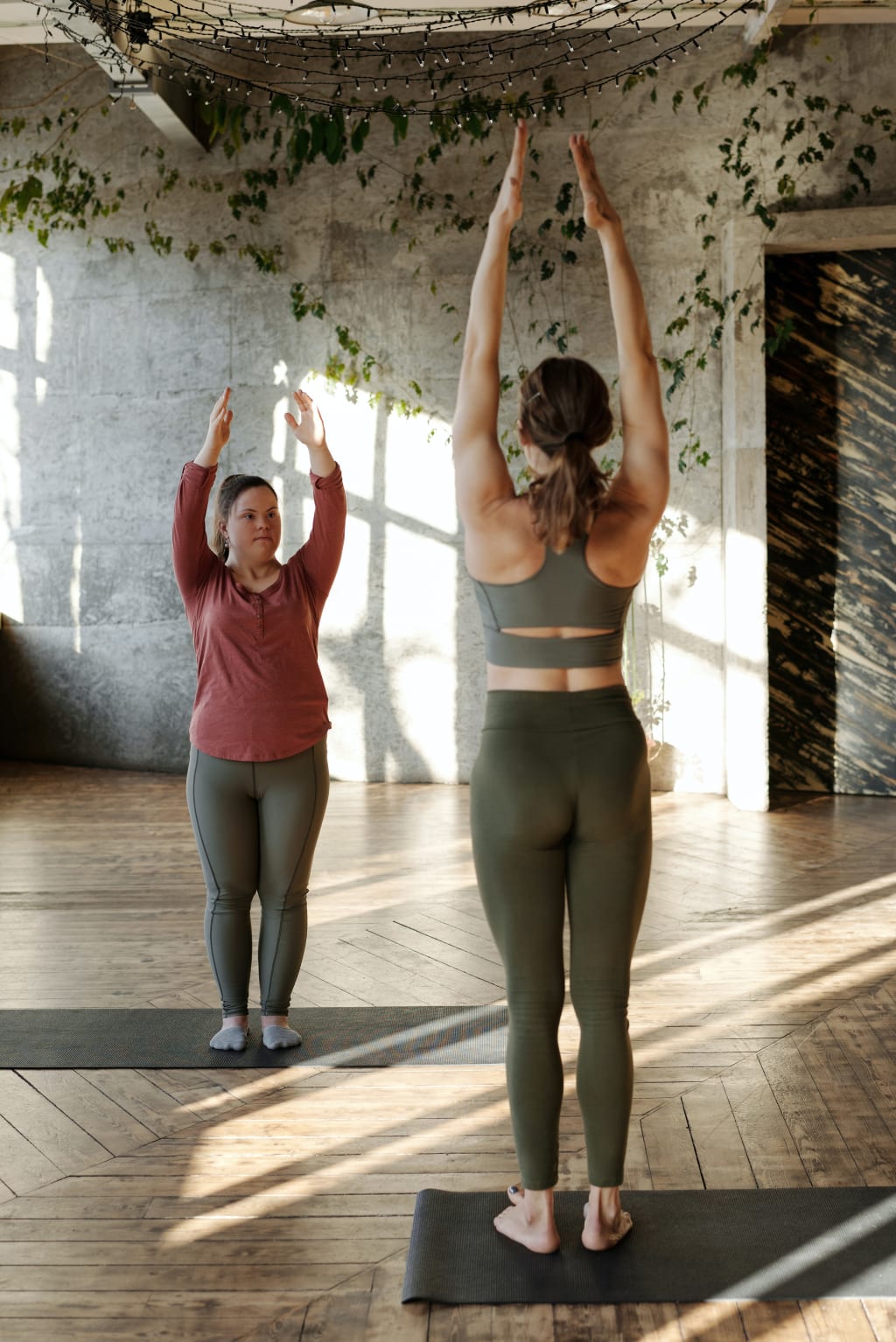Content warning
This story may contain sensitive material or discuss topics that some readers may find distressing. Reader discretion is advised. The views and opinions expressed in this story are those of the author and do not necessarily reflect the official policy or position of Vocal.
How to Have a Healthier and More Productive Home Office
Healthier and More Productive Home Office

Outline
I. Introduction
Briefly explain the importance of a healthy and productive home office
II. Setting Up Your Workspace
Choosing the right location
Organizing your desk
Ergonomic considerations
III. Lighting and Ventilation
Importance of natural light
Artificial lighting options
Ventilation and air quality
IV. Furniture and Equipment
Selecting a comfortable chair
Adjustable desk options
Essential office equipment
V. Decluttering and Organization
Minimizing distractions
Effective storage solutions
Digital organization tips
VI. Creating a Productive Routine
Setting boundaries and managing time
Establishing a work schedule
Incorporating breaks and physical activity
VII. Healthy Habits
Maintaining good posture
Stretching and exercise
Eating well and staying hydrated
VIII. Mental Well-being
Managing stress and anxiety
Incorporating mindfulness practices
Creating a positive work environment
IX. Technology and Digital Wellness
Reducing screen time
Managing notifications and distractions
Taking regular digital detoxes
X. Establishing Work-Life Balance
Setting boundaries between work and personal life
Creating dedicated spaces for relaxation
Finding ways to disconnect
XI. Conclusion
XII. Frequently Asked Questions (FAQs)
How can I make my home office more comfortable?
Is it necessary to invest in ergonomic furniture?
How can I reduce eye strain when working on a computer?
What are some effective ways to stay focused while working from home?
How can I maintain a healthy work-life balance?
How to Have a Healthier and More Productive Home Office
In today's fast-paced world, more and more people are opting for remote work, making the home office an essential part of their professional lives. However, working from home presents its own set of challenges, including maintaining productivity and ensuring a healthy work environment. In this article, we will explore effective strategies to create a healthier and more productive home office that supports your overall well-being.
Introduction
The home office is no longer just a spare room or a corner of your living space; it has become an integral part of our daily lives. A well-designed and organized home office not only enhances productivity but also contributes to your physical and mental well-being. Let's delve into some practical tips and techniques to transform your home office into a space that promotes efficiency, creativity, and overall wellness.
Setting Up Your Workspace
The first step in creating a healthier and more productive home office is selecting the right location. Choose an area that offers minimal distractions and sufficient privacy. Ideally, a separate room or a quiet corner of your house would be perfect for your workspace. Once you've chosen the location, it's time to organize your desk. Keep essential items within arm's reach, and declutter regularly to maintain a clean and focused environment. Additionally, consider ergonomic factors such as the height of your desk, chair, and monitor to ensure optimal comfort and reduce the risk of musculoskeletal issues.
Lighting and Ventilation
Lighting and ventilation play a crucial role in creating an invigorating and productive work environment. Whenever possible, make use of natural light, as it not only enhances mood and productivity but also reduces eye strain. If natural light is limited, invest in quality artificial lighting that mimics daylight. Proper ventilation is equally important to maintain good air quality in your home office. Ensure adequate airflow by opening windows or using fans, and consider adding plants to improve air purification.
Furniture and Equipment
Choosing the right furniture and equipment is essential for a comfortable and productive home office. Begin with selecting a supportive and adjustable chair that provides proper lumbar support and promotes good posture. An adjustable desk is also highly recommended, as it allows you to switch between sitting and standing positions, reducing the negative effects of prolonged sitting. Additionally, invest in essential office equipment such as a reliable computer, high-quality monitor, and ergonomic keyboard and mouse.
Decluttering and Organization
A cluttered workspace can hinder productivity and increase stress levels. Minimize distractions by decluttering your home office and keeping only the necessary items within reach. Implement effective storage solutions to keep your workspace tidy and organized. Consider using filing cabinets, shelves, and desk organizers to store documents, stationery, and other supplies. Additionally, embrace digital organization by creating folders and utilizing productivity apps to keep your virtual workspace streamlined.
Creating a Productive Routine
Establishing a productive routine is vital for maximizing your output and maintaining a healthy work-life balance. Set boundaries by defining specific working hours and communicate them with your household members. Create a work schedule that incorporates breaks, allowing you to recharge and maintain focus throughout the day. It's also important to incorporate physical activity during your breaks, whether it's stretching, walking, or practicing yoga. These activities can enhance blood circulation, improve alertness, and boost creativity.
Healthy Habits
To maintain a healthy home office, it's crucial to adopt healthy habits. Focus on maintaining good posture while working to avoid strain on your neck, back, and wrists. Take regular breaks to stretch your muscles and alleviate tension. Stay hydrated by keeping a water bottle at your desk, and fuel your body with nutritious snacks and meals to sustain energy levels throughout the day. Prioritize your well-being by incorporating healthy habits into your work routine.
Mental Well-being
Working from home can sometimes lead to increased stress and anxiety. To foster mental well-being in your home office, explore stress management techniques such as deep breathing exercises, meditation, or mindfulness practices. Create a positive work environment by personalizing your space with inspiring artwork or motivational quotes. Surround yourself with plants or natural elements that promote relaxation and boost mood. By prioritizing your mental well-being, you can cultivate a more enjoyable and fulfilling work experience.
Technology and Digital Wellness
While technology enables remote work, it's important to manage its impact on your well-being. Reduce screen time by taking regular breaks from electronic devices and engaging in offline activities. Minimize distractions by disabling non-essential notifications on your devices and using focus-enhancing tools. Consider implementing a digital detox day where you disconnect from all technology and engage in offline hobbies or spend time with loved ones. Balancing your relationship with technology is crucial for maintaining productivity and mental clarity.
Establishing Work-Life Balance
One of the key challenges of working from home is maintaining a healthy work-life balance. Clearly define boundaries between your work and personal life to avoid burnout and foster relaxation. Create dedicated spaces for relaxation and leisure activities to help you disconnect from work. Designate an area for reading, practicing hobbies, or spending quality time with family. By establishing work-life balance, you can enjoy the benefits of remote work while ensuring your personal life receives the attention it deserves.
Conclusion
Having a healthier and more productive home office is within your reach. By implementing the strategies and tips outlined in this article, you can create a workspace that promotes efficiency, well-being, and work-life balance. Remember to optimize your physical environment, adopt healthy habits, prioritize mental well-being, and find ways to disconnect from technology. With these practices in place, you can enjoy the benefits of a home office that supports your professional and personal success.
Frequently Asked Questions (FAQs)
How can I make my home office more comfortable?
Consider ergonomic furniture, adjust lighting, and ensure proper ventilation.
Is it necessary to invest in ergonomic furniture?
Ergonomic furniture promotes good posture and reduces the risk of discomfort or injuries. It's recommended for long-term health benefits.
How can I reduce eye strain when working on a computer?
Take regular breaks, adjust the brightness and contrast of your screen, and position your monitor at eye level.
What are some effective ways to stay focused while working from home?
Establish a productive routine, create a dedicated workspace, and minimize distractions.
How can I maintain a healthy work-life balance?
Set clear boundaries, create separate spaces for work and relaxation, and prioritize self-care and l

About the Creator
Tharuk Deegayu
my name is Tharuk. i am a article writer.






Comments
There are no comments for this story
Be the first to respond and start the conversation.